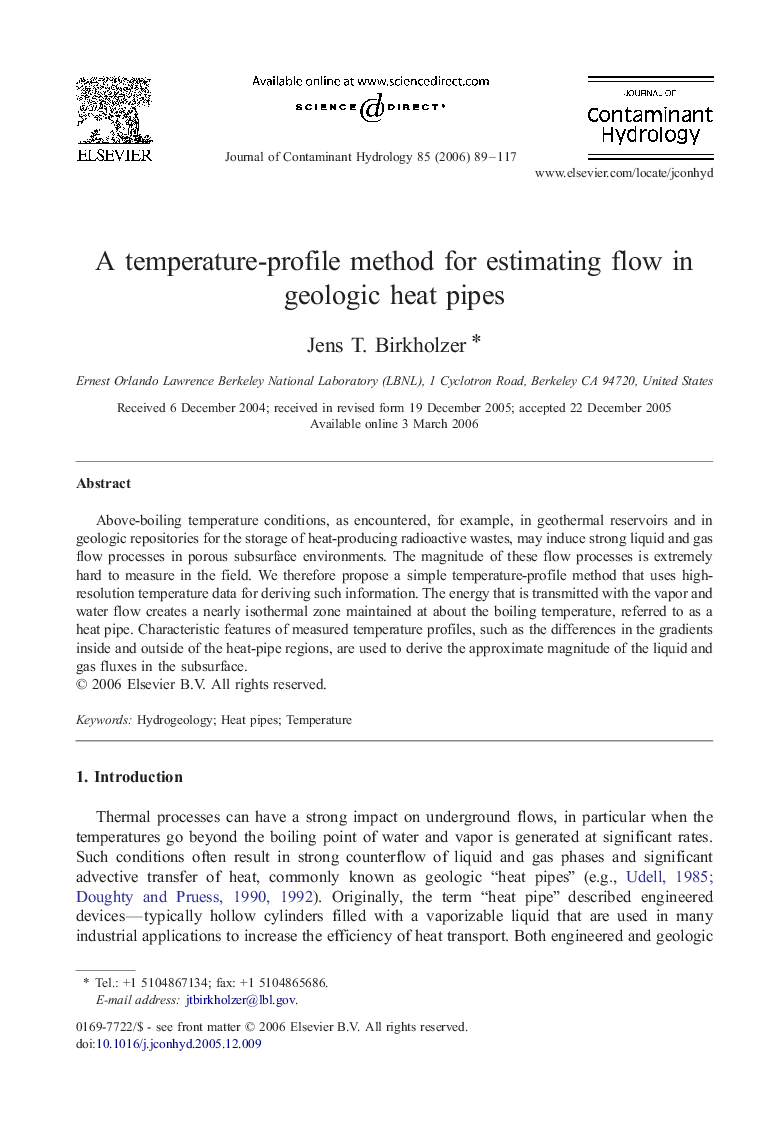| Article ID | Journal | Published Year | Pages | File Type |
|---|---|---|---|---|
| 4547630 | Journal of Contaminant Hydrology | 2006 | 29 Pages |
Abstract
Above-boiling temperature conditions, as encountered, for example, in geothermal reservoirs and in geologic repositories for the storage of heat-producing radioactive wastes, may induce strong liquid and gas flow processes in porous subsurface environments. The magnitude of these flow processes is extremely hard to measure in the field. We therefore propose a simple temperature-profile method that uses high-resolution temperature data for deriving such information. The energy that is transmitted with the vapor and water flow creates a nearly isothermal zone maintained at about the boiling temperature, referred to as a heat pipe. Characteristic features of measured temperature profiles, such as the differences in the gradients inside and outside of the heat-pipe regions, are used to derive the approximate magnitude of the liquid and gas fluxes in the subsurface.
Keywords
Related Topics
Physical Sciences and Engineering
Earth and Planetary Sciences
Earth-Surface Processes
Authors
Jens T. Birkholzer,
